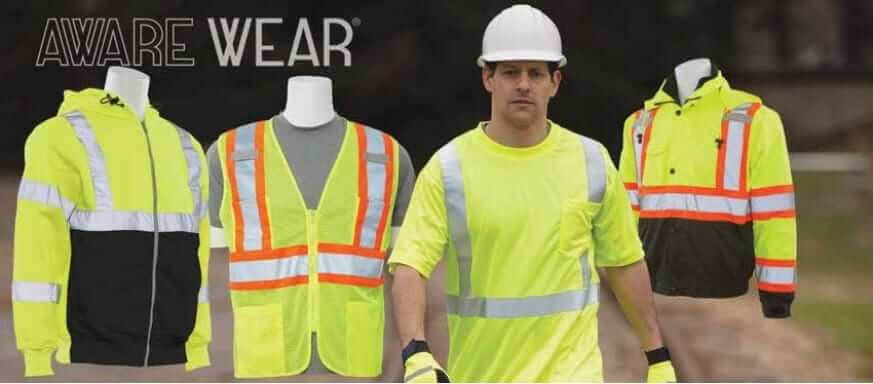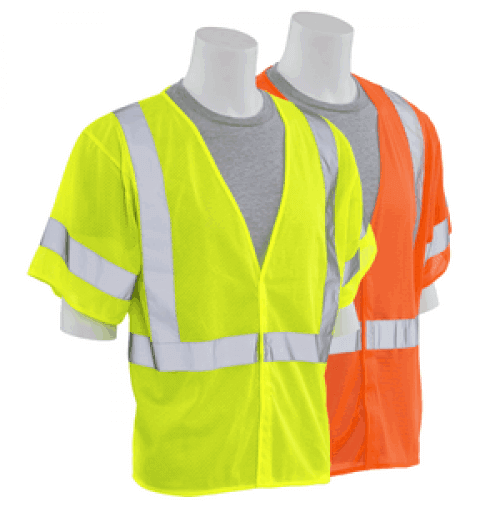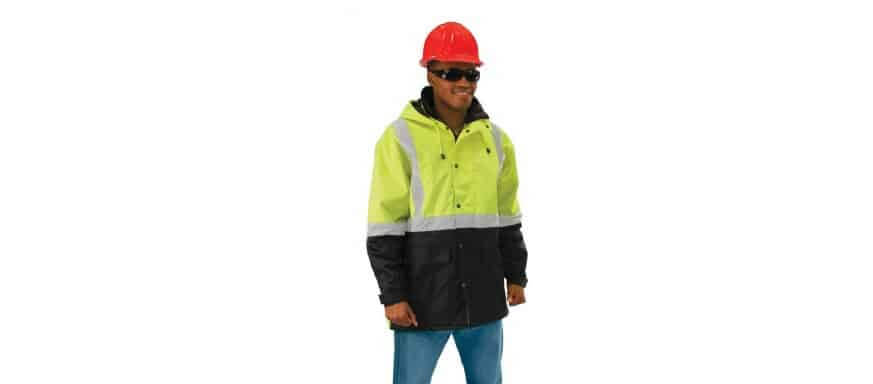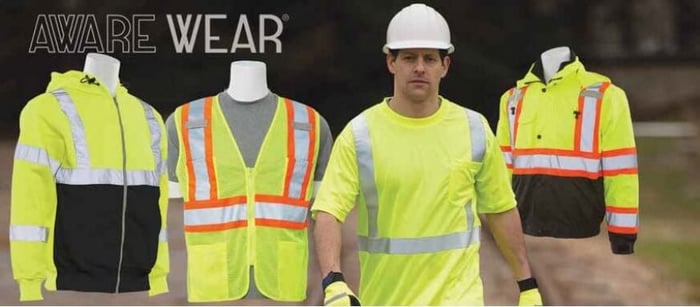
How to choose the right ANSI class apparel for your safety apparel is typically performed by designated safety personnel for the business, often the Safety Director or Manager, who will make the determination on which ANSI level is needed. There is usually a risk assessment conducted to determine the work environment and safety required. Class III, the highest safety rating, can be selected by default for all high visibility needs, or as a safety precaution. Direct Textile Store offers a variety of ANSI Class Apparel to choose from for you work needs. Read below to understand how to choose the right one for you and the different options there are.

Founded in 1918, the American National Standards Institute (ANSI) is a private, non-profit organization that administers and coordinates the U.S. voluntary standards and conformity assessment system. ANSI works in close collaboration with stakeholders from industry and government to identify and develop standards- and conformance-based solutions to national and global priorities.
Can cotton be used for ANSI compliance?
The standards for ANSI 107-2010 require a compliant background material of florescent lime or orange. The natural fibers of cotton will not hold lime or orange dye initially, and it will quickly wash off. A 50/50 cotton to polyester mix is often called "safety green" or "safety orange" however these garments will not meet the ANSI requirements, even with the addition of the appropriate retroreflective materials.

Why is the lime-yellow color used more in the United States?
Simply put, lime is easier to see than orange and provides better visibility in a cluttered work area. Also red/green colorblind individuals see orange as black in limited light, roadway conditions.
Orange is commonly used for barricades and other roadway objects. At low visibility, orange is preferred to differentiate the worker from the roadway environment.
What colors can I choose from for ANSI garment use in the United States?
ANSI has approved lime-yellow, and orange for use in the United States.
Can I personalize or use a logo on ANSI apparel?
Business often like the professional appearance or brand identity of adding logos or personalized insignia. Logos and personalization can help with theft and shrinkage; however, the size of the personalization or logo must take into account the area of background material necessary for safety and compliance or it could lead to non-compliant standards.
How should ANSI garments be washed?
You can use a machine wash for ANSI garments, just be sure to use the gentle and cold or warm water setting, turn your garment inside out and only use traditional laundry detergent. Do not use fabric softeners or bleach as they will harm ANSI apparel. It is best to line dry to prevent fading.

What colors can I choose from for ANSI garment use in the United States?
ANSI has approved lime-yellow, and orange for use in the United States.
ANSI safety apparel refers to clothing that meets the standards set by the American National Standards Institute (ANSI) for enhancing the visibility and safety of workers in hazardous environments. These standards are crucial for preventing accidents and ensuring the well-being of individuals in various industries such as construction, roadwork, and emergency response.
Key Aspects of ANSI Safety Apparel
Visibility Standards: ANSI safety apparel is classified into different types and performance classes based on visibility requirements. The standards focus on the color and retroreflective materials used in the garments. High-visibility colors, such as fluorescent yellow-green, orange-red, and red, are mandated to ensure the apparel is easily seen in various lighting conditions. Retroreflective strips are strategically placed to reflect light back to its source, enhancing visibility during nighttime or low-light conditions.
Types and Classes:
- Type O (Off-road): For workers in environments where traffic does not exceed 25 mph, such as warehouses or mining sites. This includes Class 1 garments.
- Type R (Roadway): Designed for workers exposed to road traffic and includes Class 2 and Class 3 garments. Class 2 is for those who work near traffic traveling over 25 mph, while Class 3 offers the highest level of visibility for high-speed, high-traffic areas.
- Type P (Public Safety): For emergency and law enforcement personnel, which includes Class 2 and Class 3 garments, tailored for the specific needs of public safety workers.
The primary benefit is the significant reduction in the risk of accidents. High-visibility apparel ensures that workers are easily seen by drivers, machinery operators, and other workers, especially in complex or hazardous work environments.
Adhering to ANSI standards ensures compliance with Occupational Safety and Health Administration (OSHA) regulations, which can help organizations avoid fines and legal issues.
ANSI safety apparel is designed to be durable and comfortable, ensuring that workers can perform their duties without the hindrance of ill-fitting or quickly deteriorating garments.
ANSI safety apparel plays a critical role in worker safety by enhancing visibility and reducing the risk of accidents. Adherence to these standards ensures a safer work environment, compliance with regulations, and the well-being of workers across various industries.
Direct Textile Store offers a wide-range of safety apparel and protection including ANSI and non-ANSI economy safety vests, rain wear, head protection, disposable face masks, reusable face masks, ERB safety vests, reflective safety vests, mesh safety vests, safety helmets, and first aid kits.
Direct Textile Store ships to all US states, including Alaska and Hawaii, US Territories, Canada, Puerto Rico, St. Thomas, and St. Croix.

About the Author
Haley Bridges, Marketing Assistant at Direct Textile Store
Haley Bridges has served as Marketing Assistant at Direct Textile Store, where she specializes in hospitality linens, uniforms, and bulk textile solutions. She works closely with hotels, restaurants, and healthcare facilities to match them with durable, high-quality products that balance both performance and value. Haley's expertise in textile sourcing and merchandising strategy helps businesses make confident purchasing decisions while staying ahead of industry trends.
If you need assistance, contact Direct Textile Store Customer Service at 800-615-5822
Copy & Paste to Link to this Post!
<a href="https://directtextilestore.com/blog/how-to-choose-the-right-ansi-class-apparel/">How To Choose The Right ANSI Class Apparel?</a>



